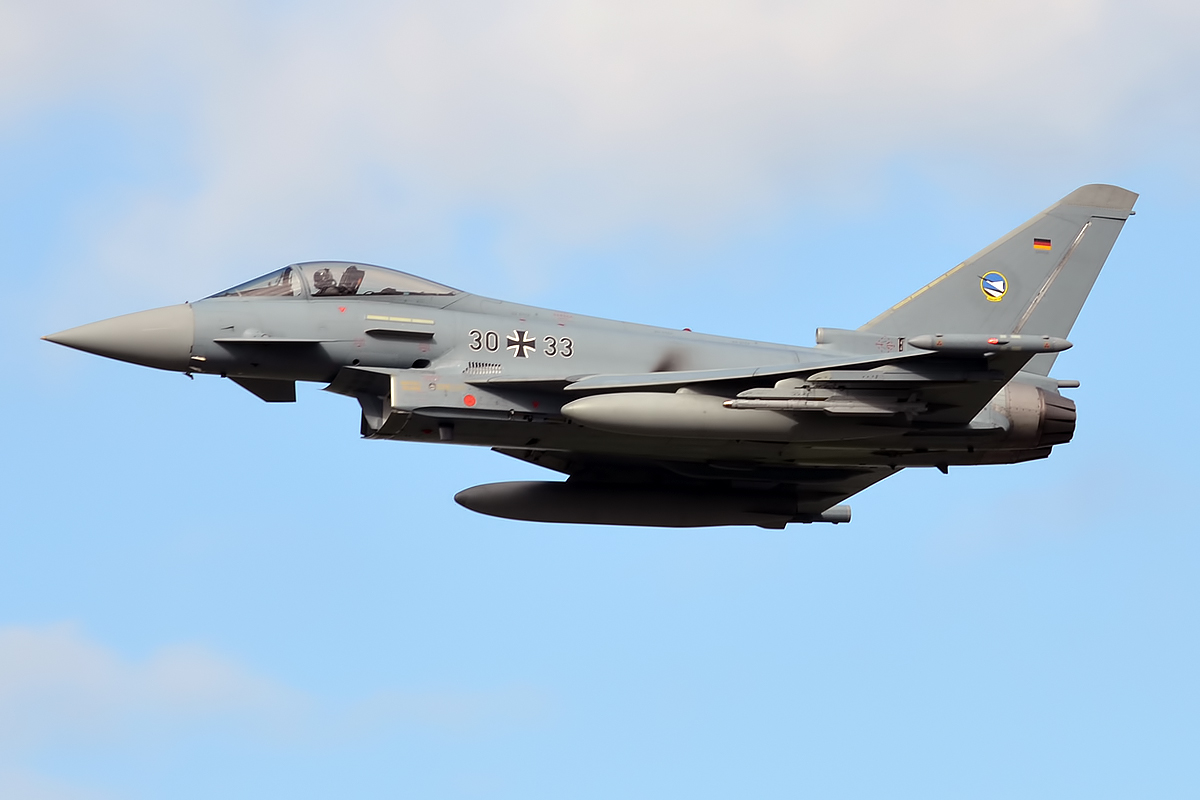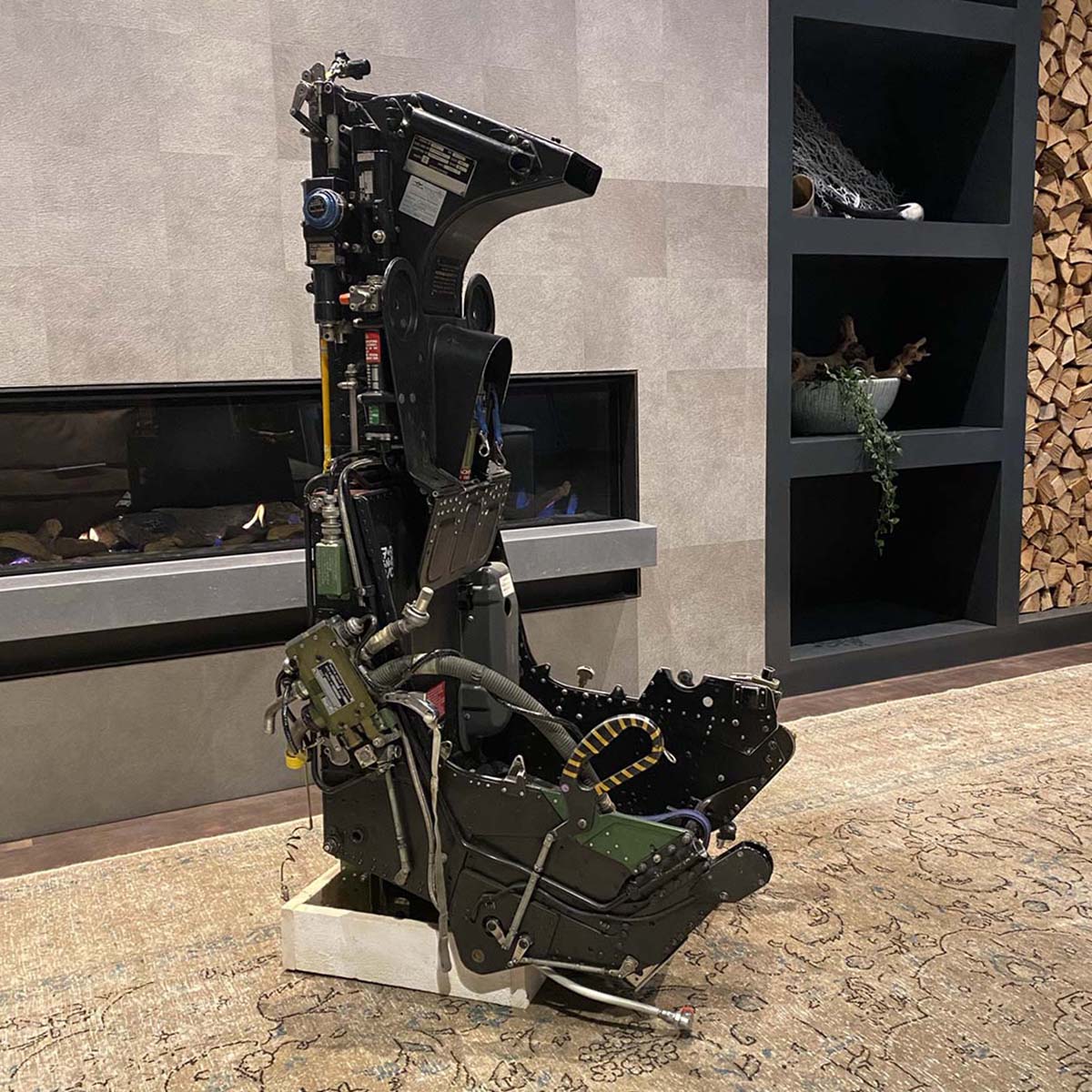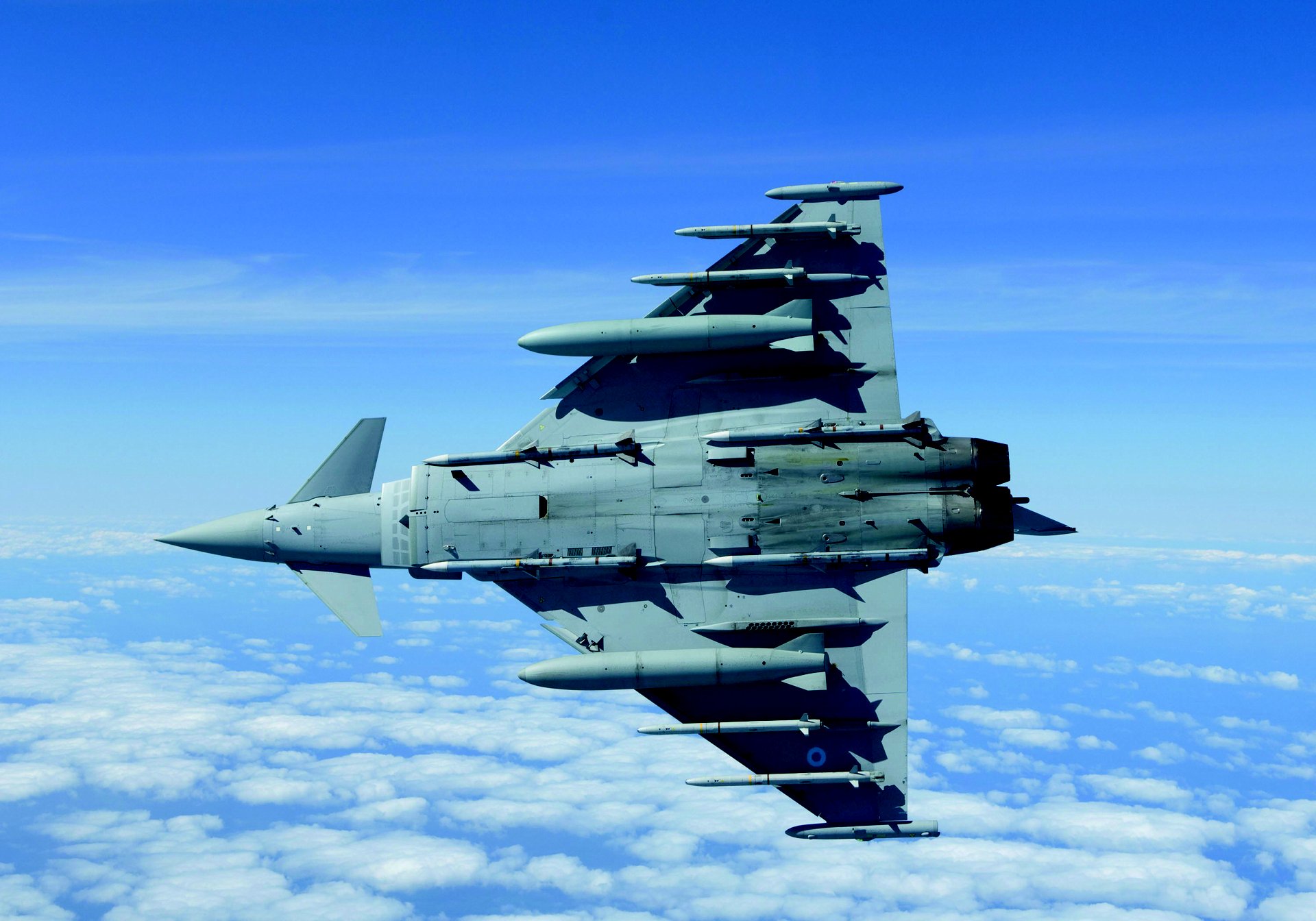A snag with the pyrotechnic and thrusters of the Martin-Baker ejection seats has left the Eurofighter Typhoons of the Royal (British) Air Force and the Luftwaffe (German Air Force) grounded since July 20, having been taken off “non-essential flying.”
The US Navy also grounded an undisclosed number of its F/A-18 Hornet, Super Hornet, and E/A-18G Growler, as they also use variants of ejection seats that have the same or similar component.
The discovery also impacted the RAF’s BAE Hawk aircraft, which make up the ‘Red Arrows’ display team, that had to cancel their aerobatic performance in the closing ceremony of the Farnborough Air Show.

According to reports, a German Air Force spokesperson confirmed on July 22 that Eurofighters not meant for “active protective” roles on the eastern flank – currently witnessing the Russia-Ukraine war – are being benched for their ejection seats to be examined and repaired.
Typhoons part of the Quick Reaction Alert (QRA) squadrons are dedicated to rapidly mobilizing, intercepting, and observing the enemy military activity. They are the QRA North in Neuburg; QRA South, Donau and; other formations based in Norvenich and Rostock-Laage. The German Air Force flies 140 Typhoons.
“There is no certainty about the functioning of the pyrotechnic cartridges of the seats installed in the aircraft,” the report added.
Fortunately, Panavia Tornado ground attack aircraft were immediately reinstated following the initial suspicion of bearing the same problem since they belonged to a different production line than the Typhoon. There was no update on the matter at the time of filing this report.
Martin-Baker Ejection Seats Pushes Jets Down?
The RAF then followed suit and too announced taking off its own Typhoons and Hawks from the air. While the Typhoon uses the Martin-Baker MB Mk.16A ejection seats, the Tornado and the Hawk fly with the Mk.10 variant.
It is unclear if other Typhoon users like Spain and Italy have also undertaken similar measures. “We have been notified of a technical issue which may affect the safe operation of our ejector seats in Typhoon and @rafredarrows aircraft.
We have paused non-essential flying as a temporary safety precaution until the situation is better understood,” the Royal Air Force tweeted on July 22.
The US Navy, on its part, as per a statement from the Naval Air Systems Command (NAVAIR) on July 26, identified the malfunctioning component as the Cartridge Actuated Device (CAD) on the MB Mk.14 seats.
The MB Mk.14 is also installed on the T-45 Goshawk and F-5 Tiger II trainers.
“After being notified of potential defect by the vendor, Martin-Baker, the team used validated radiography procedures to scan on-hand inventory to verify each item was properly manufactured before sending to the fleet to replace existing CADs. The CAD will be replaced at the aircraft’s assigned squadron and the aircraft will be inspected before its next flight,” said the NAVAIR statement.

The Eurofighter Typhoon was first introduced in 2003. Around 570 Eurofighter typhoons have been built so far with a per unit cost of $117 million.
The aircraft comes with single-seat and two-seat variants. The fighter’s empty weight is 11,000 kg, and it can take off with a maximum weight of 23,500 kg. The aircraft is powered by two Eurojet afterburning turbofan engines, which produce around 18,143 kg of combined thrust, giving it a top speed of 2,494 km.
It has a ferry range of 3781 km, and combat within a radius of 1388 km. The Typhoon can climb at the rate of 1,043 feet per second and can reach a maximum altitude of 65,000 feet.
The fighter jet comes with 13 hardpoints in addition to a 27 mm revolver cannon. The Generation 4++ Typhoon – apart from the French Dassault Rafale –is the only multirole jet fighter comparable to the most advanced Russian fighter of its class, the Su-35S and stands a reasonable chance against the low-observability/stealth Su-57 ‘Felon.’

Exercise To Deter China In Jeopardy
In an embarrassment for Germany, the problem was discovered when Defense Minister Christine Lambrecht was visiting the Tactical Air Force Squadron 74 in Neuburg, depriving her of the opportunity to see Luftwaffe pilots perform maneuvers.
The goal was to convince her of Germany’s ability to hold off Russia in the air in case it came down to it, according to a report in Suddeutsche Zeitung.
This might also have a bearing on the upcoming Rapid Pacific, Pitch Black and Kakadu drills from mid-August to early October, 22,000 km away in Australia.
Apart from visits to the United Arab Emirates (UAE) and Singapore as part of the exercises, stopovers are also planned in South Korea and Japan.
The air force that wanted to send 13 aircraft, including six Eurofighters, four A-400Ms and three tankers, now is staring at the possibility of not being able to participate if the problems aren’t resolved.
- The author can be reached at satamp@gmail.com
- Follow EurAsian Times on Google News




